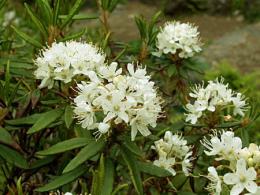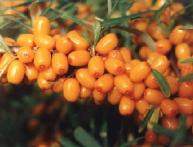The use of wild rosemary in medicine and everyday life

If you find yourself in a swamp in June or July, you may not return from there. After all, at this time the marsh rosemary is blooming there, the intoxicating smell of which will not only cause you to get a headache and feel dizzy, but may also cause you to lose consciousness. Such a pungent smell is given to wild rosemary by essential oils contained in all parts of the plant.
Despite this peculiar intoxicating smell, wild rosemary is a medicinal plant.
- Application of wild rosemary in the form of an infusion, it has an expectorant effect, lowers blood pressure, and promotes dilation of blood vessels.
- The infusion is given to patients with heart disease, tuberculosis, bronchial asthma, and kidney disease.
- Tablets made from wild rosemary have an antitussive effect.
- The essential oil of the plant has bactericidal properties against Staphylococcus aureus.
- The raw material of wild rosemary is also used as a diuretic.
- For diseases associated with metabolic disorders, gout and rheumatic pain, the use of wild rosemary has a positive effect.
- An extract of wild rosemary essential oil is used to make nasal drops for a runny nose.
- Ointments are made from wild rosemary raw materials, which are used for scabies, arthritis, gout, and for getting rid of lice.
- For eczema and acne, an infusion of wild rosemary herb in sunflower oil is used. The resulting mixture is rubbed into the affected areas of the skin.
- Ledum sprigs or powder from its leaves, spread among clothes, get rid of moths.
It is always worth remembering that wild rosemary is a poisonous plant. Therefore, during treatment they must strictly adhere to the recommended dosages.
Interesting information about the vegetable garden








